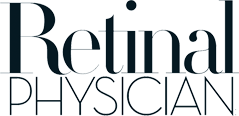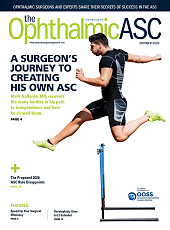The following transcript has been edited for clarity:
I'm Charles C. Wykoff, MD, PhD, a retina specialist from Houston, Texas, and it’s great to be able to summarize the presentation that we gave at AAO subspecialty day 2025 for retina. This was a first-time data release of 2-year data from the ALTITUDE phase 2 clinical trial. The context here is the treatment of nonproliferative diabetic retinopathy (NPDR) without diabetic macular edema (DME). Most retina specialists around the world are not using anti-VEGF therapies for the treatment of NPDR without DME, and yet NPDR progresses to DME and PDR, which can be major causes of vision loss around the world. And so there certainly remains a large unmet need for better, more durable, safer therapies that prevent the progression to DME and PDR.
One of the fascinating historical points here is that many have tried. There are many challenges and failures along this journey to develop alternative systemic or nonintravitreal bolus therapies to slow diabetic retinopathy progression.
The potential durable approach that we have looked at here is to use gene therapy to create a local biofactory that produces an anti-VEGF agent. In particular, sura vec (surabgene lomparvovec, formerly ABBV-RGX-314; Regenxbio/AbbVie) is an anti-VEGF gene therapy, an AAV8-based gene therapy, that has been studied in the NPDR population in the ALTITUDE trial. The goal here is a one-time, in-office suprachoroidal injection of gene therapy that provides long-lasting stability or improvements in diabetic retinopathy severity and reduces vision-threatening events.
In the ALTITUDE trial, patients randomized to gene therapy received a single suprachoroidal injection of sura vec and were then followed through ALTITUDE and then the long-term follow-up study, and they were treated for diabetic retinopathy at investigator discretion. The first 2 cohorts received no prophylactic steroids and the third cohort received a 7-week prophylactic steroid course. At baseline overall, the patients had no DME and 84% were at DRSS level 47 and 16% were DRSS level 53. If you look at outcomes through one year, efficacy outcomes among all patients: DRSS worsening was observed in 42% of the control eyes, which was observation, compared to 17%, 0%, and 0% at the 3 dose levels for sura vec. DRSS improvements of 2 steps or more were seen in 8% of the control eyes compared to 33%, 21%, and 21% in the 3 sura vec dose levels.
The new data are through 2 years, and first we showed among patients without additional DR treatments, 2 or more step DRSS improvements for dose level 2 appeared stable from year 1 to year 2 at 18% and then for dose level 3, that percent increased from 21% to 50%. This was in comparison to 8% at 2 years in Protocol W, serving as a historical control. We also showed data from all the dose level 3 ALTITUDE patients. All their data from DRSS changes from baseline through 2 years. While the numbers are limited, no patients had DRSS worsening from year 1 to year 2, and 9 of 10 patients had improvements from baseline through year 2.
The last efficacy point was to look at vision-threatening events through 2 years and these rates were 33%, 25%, and 14% at the 3 sura vec dose levels, in comparison to about 50% with historical controls PANORAMA and Protocol W.
Last point is, of course, safety. Among this NPDR population through dose level 3, sura vec has overall appeared to be well tolerated, with conjunctival hyperemia in up to 29%, episcleritis in up to 12.5%, and intraocular inflammation up to 17% in dose levels 1 and 2. Critically, in dose level 3, with the addition of a prophylactic short course of topical steroids, we saw no intraocular inflammation and 20% of patients had episcleritis.
Looking forward, the summary from ALTITUDE and the 2-year data to date is that of these NPDR patients, suprachoroidal anti-VEGF gene therapy with sura vec appears to be well tolerated with a short course of topical steroids and has shown signs of durable efficacy through 2 years with DRSS improvements and reductions in vision-threatening events. Moving forward, a pivotal trial among NPDR patients with superchoroidal sura vec is anticipated. Thank you. RP








